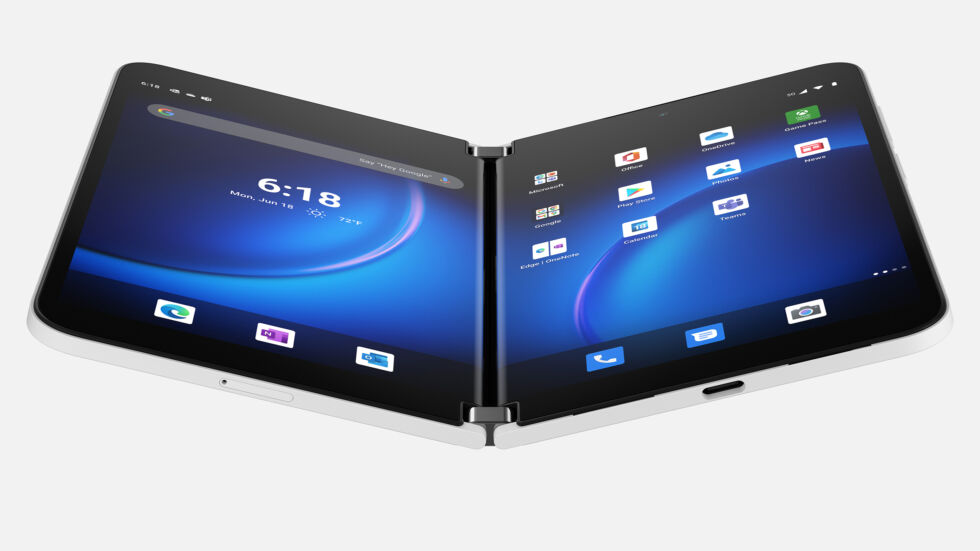-

The Surface Duo 2. From this angle it looks identical to the Duo 1. [credit:
Microsoft ]
The Surface Duo, take two. Microsoft’s quirky two-screen device is back, and you can still run two apps side by side, fold the thing over for single-screen mode, or draw on it with a pen. The original device landed at the end of a messy, years-long journey that included a switch from Windows to Android and an official announcement that was a full year before the ship date. The Surface Duo 1 was a big flop and eventually hit the bargain bin for nearly $1,000 off the $1,399 MSRP (the device is still readily available for $412, by the way!). Microsoft seems undeterred by the original unit’s performance, though, and it has produced this sequel. So, what’s been improved?
First off, the specs look a lot better this year. Microsoft is turning in a modern device with a Snapdragon 888, 8GB of RAM, 128GB of storage, and a much bigger 4449mAh battery. The original device had a Snapdragon 855 SoC, which was 18 months old when the Duo shipped, and so this is a big improvement. There’s also NFC this year, which was another odd quirk of the original device’s spec sheet. The OG Duo was the thinnest Android device ever, at 4.8 mm thick, but Microsoft found room to increase the 3577mAh battery by making the phone thicker, and now each half is 5.5 mm. It’s still one of the thinnest Android devices ever, and Microsoft even managed to cram mmWave support into the US version.
The phone still has two rigid, glass-covered screens that fold up like a moleskin notebook. This year the two OLED screens are a bit bigger, at 5.8-inches each, and Microsoft is again modernizing them with 90 Hz refresh rates. The resolution is close to the 4:3 aspect ratio of last year but not quite, with a weird measurement of 1892×1344. The reason for this seems to be the addition of a few extra pixels for a new spine display. The hinge-side of each display has a curve to it, just like the annoyingly curved sides of a flagship Android phone, allowing you to see a tiny sliver of the screen while the Duo 2 is closed. Microsoft is using this to display little notification chips for things like your number of missed calls or messages.
